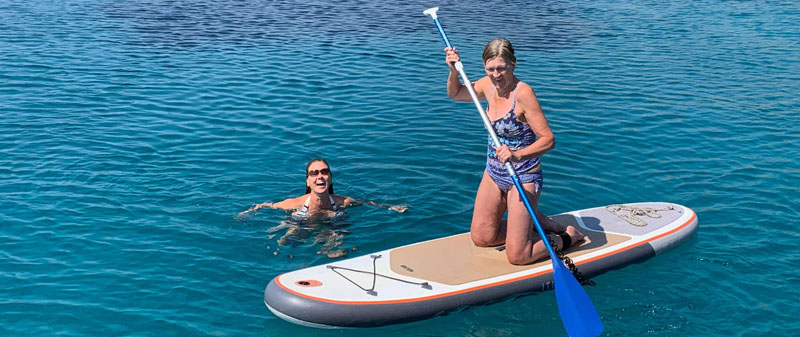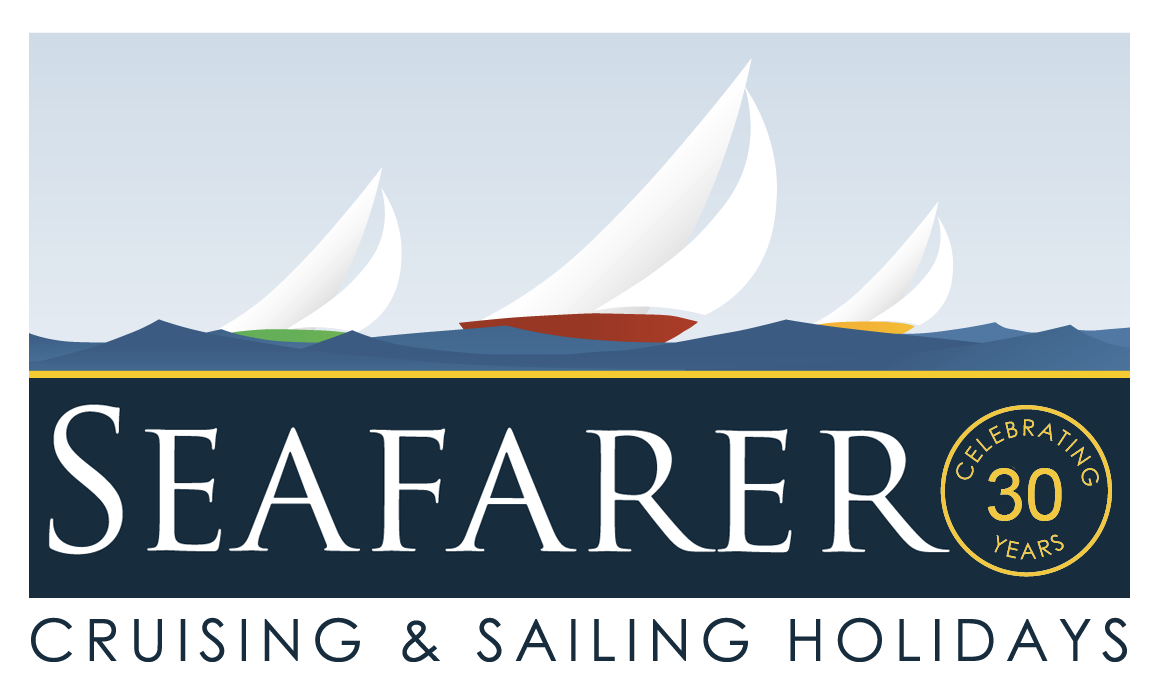How to use a SUP from a Sailing Yacht
Stand Up Paddleboarding is currently the fastest growing watersport worldwide and its easy to see why. The ability to explore new places with such a simple bit of equipment makes it very flexible and is perfect for those who want to have fun on the water. We’re not advocating changing sports, far from it but instead suggesting that an SUP is a perfect adition to a yacht, especially for cruising in the crystal clear waters of our flotilla destinations.
Most modern SUP’s are inflatable but huge advances in manufacture in recent years has made them very stiff and you would be hard pressed to tell the difference to a solid board if the SUP is properly inflated. Having an inflatable paddleboard works perfectly for a cruising yacht as it allows you to store it either on deck or below depending on the conditions. When you arrive in a beautiful bay thats when the magic starts.

Setting Up
To set up a Stand Up Paddleboard from scratch takes between 5 and 10 minutes depending on how quickly you can pump it up. The first stage is to make sure the valve is out before inserting the pump otherwise the air can rush out of the SUP, to do this simply rotate it until it springs out. Once this is done you can insert the pump and inflate to the pressure on the valve (or at least 10psi). Once inflated attach the leash and if separate attach the fins.
Paddling Techniques
Once your ready to go there are a few techniques that will help you get exploring. The first is to check the paddle length. The simplest way of doing this is to adjust it to an arm’s length above you head which means the whole paddle will be in the water when standing up. When you get on the board stand on the centreline with one foot on either side of the handle. The best way to learn the various strokes is to watch Daryl do his stuff in the video then get out on the board and play around in a safe area.

Safety
Safety is very important with any watersport and SUPing is no different. The most important consideration is to always wear the leash. This is attached to the back of the board and then placed around either ankle. Inflatable SUPs are very light and can easily travel faster than someone can swim making the leash key. For those who are uncomfortable swimming or children a buoyancy aid is advised as these will keep someone afloat if they fall off the board, buoyancy aids are available on all Seafarer Flotillas on request.
The wind is always a risk when SUPing, especially for beginners and thus if the wind is force 3 or above it is recommended to stay upwind of the moored yacht, thus making it easy to return if there is a problem. If you find yourself unable to return to the yacht then you can either kneel on the board and use the paddle or place the paddle on the deck and lie on top of it, paddling with your hands. This acts to hugely reduce your windage.
Storage and Transport
In our opinion the easiest way to launch the SUP is the throw it over the side while holding onto the leash (or attach it to guardrail) then take the it round by the least to the stern. This avoids trying to manoeuvre the SUP through the Bimini and past the wheel/wheels. To retrieve it use a similar technique to lift it over the guardrails on either side of the yacht, this may be easier with two people. When sailing you can tie the SUP to the guardrails just make sure the fins are either facing outwards or are taken off and the SUP is not fouling the jib sheets. If you’re not intending to use the SUP for a few days bits best to deflate it and either store it in the bag on deck or below. When storing on deck beware that SUPs suffer badly from UV radiation from the sun and thus, they should be kept in the bag when not used regularly or covered on the guardrail.
Booking & More Information
Stand Up Paddleboards are available from all our flotillas (except Turkey & Thailand) and included in all Greek cabin charter holidays. If you want to add one or more to your boat give us a call on 0208 324 3118. Its worth booking early for peak season as there is often loads of demand.

